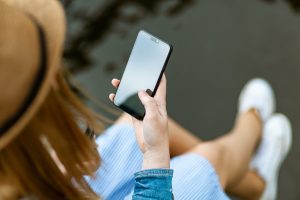Although using smartphones as diagnostic tools is a work in progress, doctors and patients have found some real-world success in employing phones as medical devices. For instance, in the Google Fit app, users can check their heart rate by placing their finger on the rear-facing camera lens or track their breathing rate using the front-facing camera.
According to a Grand View Research report, there are now more than 350,000 such digital health products available in app stores.
While the overall potential of smartphones remains uncertain, companies and researchers are rapidly developing apps that tap into built-in cameras and light sensors, microphones, accelerometers, gyroscopes, and speakers. Once data is collected, the apps analyze it using AI software.
“It’s very hard to put devices into the patient home or in the hospital, but everybody is just walking around with a cellphone that has a network connection,” said Dr. Andrew Gostine, CEO of the sensor network company Artisight, Inc., which makes operating systems for smart hospitals. Indeed, according to the Pew Research Center, most Americans now own a smartphone, including more than 60% of people 65 and over — that figure was just 13% a decade ago.
Among other applications, Google is investigating the use of smartphone microphones for detecting heartbeats and murmurs and the camera to screen for diabetic eye disease. The company also recently purchased the Seattle startup Sound Life Sciences, which created an FDA-cleared sonar technology app that bounces inaudible pulses off a patient’s body using a smart device’s speaker in order to identify movement and monitor breathing.
Meanwhile, Canary Speech uses a smartphone’s microphone to analyze patients’ voices for mental health conditions. It can also integrate with telemedicine appointments and allow clinicians to screen for anxiety and depression through the use of a library of vocal biomarkers and predictive analytics.
Last year, Australia-based ResApp Health received FDA clearance for an iPhone app that screens for moderate to severe obstructive sleep apnea (OSA) by using a smart device’s microphone to listen to breathing and snoring. And using an iPad’s or iPhone’s camera, Brightlamp’s Reflex app measures how a person’s pupils react to changes in light and can help manage concussions and vision rehabilitation, among other things.
However, there are still hurdles to clear for diagnostics apps. Securing buy-in from health care providers means ensuring the accuracy and clinical validation of diagnostics apps. Many of these tools still need fine-tuning, according to Dr. Eugene Yang, a professor of medicine at the University of Washington.
“False positives and false negatives lead to more testing and more cost to the health care system,” said Yang.























